
Flotation is one of the main methods of graphite ore beneficiation. Graphite flotation beneficiation and purification can make the grade of graphite reach 80-90%, or even about 95%. The main points of the process include the flotation process and the flotation reagent. You can learn about these two aspects in detail below.
The flotation method is mainly based on the difference in wettability of the surface of graphite and gangue minerals. Due to the good hydrophobicity of graphite, it will adhere to and float on the air bubbles, while the hydrophilic gangue will remain in the water to achieve flotation separation. The flotation process mainly includes three parts: ore preparation, slurry mixing and grinding and flotation.
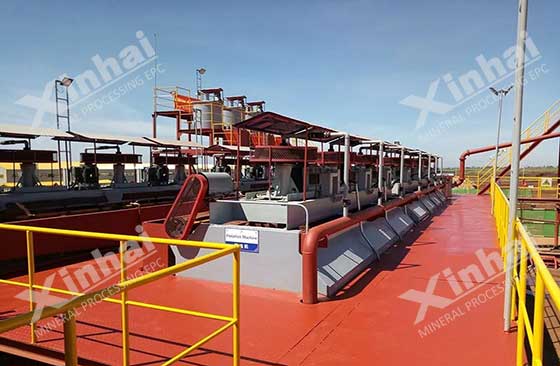
01Graphite mine preparation process
The ore preparation process of graphite can include: mineral crushing, grinding, grading and other links.
Graphite crushing process:
The crushing process mainly relies on crushing equipment to complete mechanical crushing by means of extrusion, impact, splitting and grinding to achieve the initial dissociation of graphite and gangue minerals. The hardness of graphite ore is generally medium-hard or medium-hard and soft, and the raw ore grade is between 2 and 10%. The crushing process is relatively simple, and three-stage open-circuit, two-stage open-circuit or one-stage open-circuit process is often used. If it is a small mine dealing with weathered ore, it can be directly ground without crushing.
Concentrators often use jaw crushers for coarse crushing of large-sized minerals. Hammer crushers and impact crushers are used for secondary crushing of minerals. Cone crushers and roller crushers are used for fine crushing of minerals.
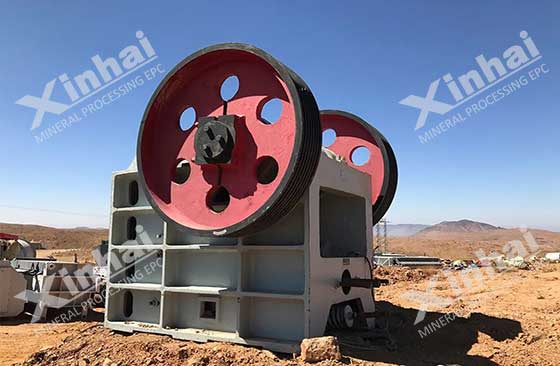
Graphite grinding process:
This stage is to further realize the dissociation of graphite monomer or conjoined body after crushing. In order to select large flake graphite as soon as possible, multi-stage grinding process is often used in the grinding stage, and the separation is completed with flotation. At this stage, ball mills, rod mills and stirring mills are commonly used as grinding equipment.
Graphite classifying process:
Generally, it is combined with grinding to form a grinding and classification operation. After grinding, it is qualified and mixed into the classifier equipment, and the solid particles are separated according to the size of the particle, so as to separate the qualified particle size products in time. Graphite classification commonly used cyclone and spiral classifier as classification equipment.
02Graphite slurry mixing process
Slurry mixing is an important process in the mineral purification and sorting process, which can prepare for the subsequent sorting operations. Generally, by adjusting the slurry concentration, the agent is dispersed and fully contacted with graphite minerals.
Slurry mixing in graphite ore dressing plant can be divided into conventional sizing, aerated sizing and graded sizing. Then mechanical stirring, jet mixing and static mixing are carried out to complete the slurry mixing. It is mainly completed in equipment such as mixing barrels, pulp pre-processors and pulp preparers.
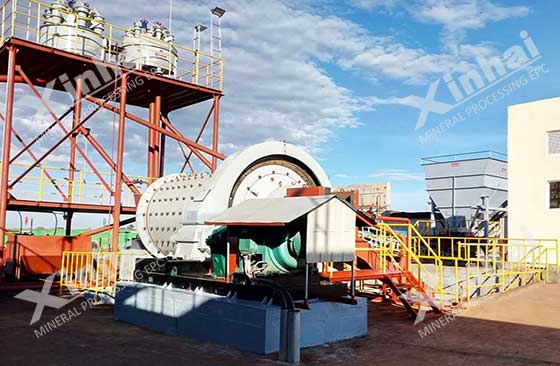
03Graphite flotation process
Depending on the type of graphite, the graphite flotation process is also different. The conventional flotation process is generally a closed-circuit process of multi-stage flotation-sequential return or centralized return of medium ore. When the grinding operation of each stage is completed, they all enter the flotation stage. The return of medium ore is a process in which the medium ore produced after flotation is returned to the previous operation in sequence or in a centralized manner to improve the flotation efficiency of graphite ore.
Concentrators often use overflow ball mills for fine grinding operations, SF-type flotation machines and JJF-type flotation machines for roughing and sweeping operations, and XJK-type flotation machines for selection operations.
In the actual beneficiation operation, in addition to choosing the appropriate flotation process, the choice of reagents is also particularly important. By adding reagents, the hydrophobicity of graphite can be improved, and the effective separation of graphite and gangue minerals can be improved. At present, common graphite ore flotation agents are mainly collectors, foaming agents and regulators.
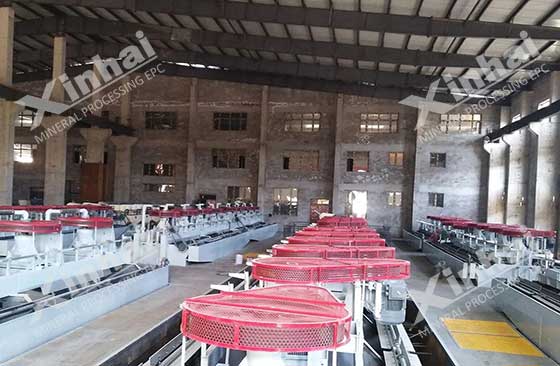
01 Collector
Graphite itself has a certain floatability. Graphite concentrates can also be floated without the use of collectors. But the flotation efficiency is not ideal. Therefore, a thin oil film can be formed on the surface of graphite ore by appropriate addition of collectors. This enhances the hydrophobicity of the graphite and allows it to adhere firmly to the air bubbles, thereby increasing the floatability of the graphite and improving concentrate recovery. Common graphite ore flotation reagents mainly include: kerosene, diesel oil, liquid paraffin, heavy oil and other hydrocarbon oils.
02 Foaming agent
Foaming agents are composed of polar and non-polar base molecules. The polar groups are hydrophilic and the non-polar groups are hydrophobic. By adding a foaming agent, the mechanical strength of the bubbles can be increased, and at the same time, the number and size of the bubbles can be controlled, the speed of the floating of the bubbles can be controlled, and the distribution state of the bubbles can be changed. Commonly used foaming agents for graphite ore are 2# oil, 4# oil, pine oil, cresol acid and camphor oil.
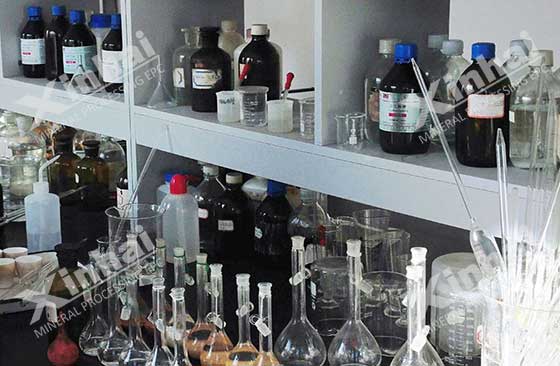
03 Adjuster
The purpose of the modifier is to adjust the action of the collector and the minerals, and suppress or strengthen the hydrophobicity of the minerals. According to their different functions, they can be divided into three types: pH adjuster, inhibitor, and dispersant.
pH adjuster: commonly used lime (CaO), NaCO3, Na(OH)2;
Inhibitors: mainly water glass, sodium carboxymethyl cellulose, EDTA, tartaric acid, citric acid, oxalic acid, etc.;
Dispersants: mainly include water glass, sodium hexametaphosphate, sodium polyacrylate, etc.
The above content is the introduction of the conventional flotation process and flotation reagents of graphite ore. In the actual beneficiation plant, the beneficiation process and equipment cannot be blindly selected. Mineral beneficiation tests should be carried out. According to the test analysis, a suitable graphite flotation process and reasonable flotation reagents should be designed to improve the beneficiation efficiency of graphite ore and obtain an ideal recovery rate.
To find out more about our products and solutions, please fill out the form below and one of our experts will get back to you shortly.